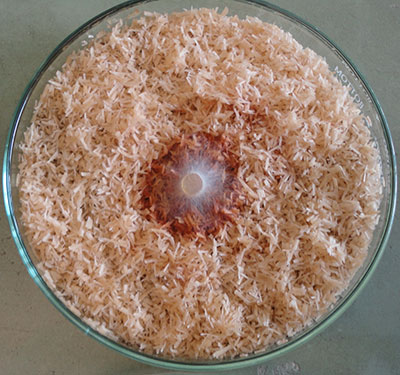Paper or plastic? This seemingly mundane question captures one of our biggest sustainability challenges: although paper is renewable and biodegradable, for many uses non-degradable plastic still wins out due to its resilience and versatility. Now, thanks to a new grant from the European Research Council, Professor Emma Master (ChemE) is searching for ways to get the best of both worlds.
This week, Master was awarded €1.98 million ($2.8 million CAD) for a project known as BHIVE: Bio-derived High Value polymers through novel Enzyme function. Involving collaborators at Aalto University in Finland, the project aims to search for natural enzymes that could transform plant material — including forestry or agricultural waste — into a greener alternatives to non-degradable plastics.
“Nature creates many highly functional and valuable polymers, but so far we have done a relatively poor job at harnessing them,” says Master. “I think we can do much more once we understand how to fine-tune the chemistries of natural polymers for our purposes.”
In order to do this, she is examining the genes of organisms that break down wood for a living. That includes fungi that survive on rotting tree logs, but it also includes bacteria that live in the guts of moose and beaver, two animals that are well-known for their ability to at least partly digest woody fibres.

Master’s previous work used genomic screening to find out what proteins or enzymes those organisms use to break apart wood’s tough chemical structure. The idea was to use these enzymes to reduce wood to its basic chemical building blocks, then to use other methods to reconstruct these elements into useful materials, including plastics. With this new project, Master and her team are doing something more subtle.
“We’re actually quite interested in synthetic reactions, not only degradative reactions,” says Master. In other words, they’re no longer trying to break wood down entirely, but rather they’re looking for ways they might tweak the chemical structure of plant fibres to give them new properties.
For example, imagine if the team could identify an enzyme from a fungus that ‘opens up’ the chemical structure of cellulose, a natural polymer found in wood. This material might be more amenable to chemical treatment that could transform it into something that doesn’t fall apart when it gets wet, or that can be used to make an air-tight seal. Both of these are things that paper currently can’t do, but non-degradable plastics can.
“The motivation of all of this is to create a more comprehensive toolkit that allows us to sustainably produce high-value chemicals and polymers from plant sources,” says Master.
“Ensuring a sustainable future is a major focus of the world-class research we produce,” said Professor Ted Sargent (ECE), U of T Engineering’s vice-dean, research. “Professor Master’s work on the development of greener materials is a great example of how we collaborate with partners around the globe to solve the biggest engineering challenges of our time.”



